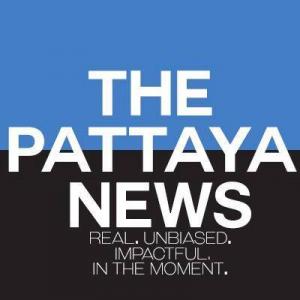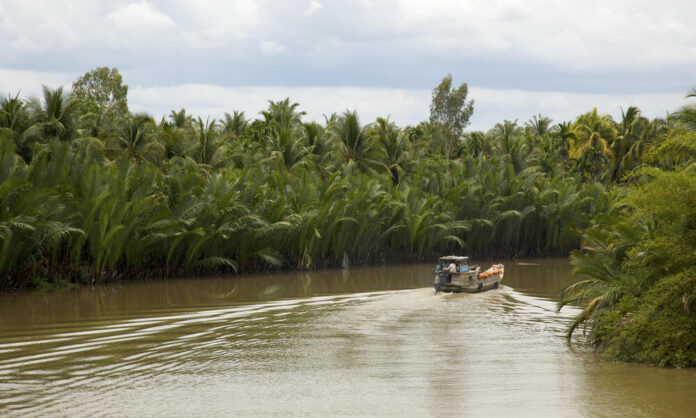January 5, 2022 — 44 different primate species call the Greater Mekong home, but are increasingly threatened by habitat loss and hunting.
“Primates of the Greater Mekong: Status, Threats and Conservation Efforts,” a new WWF report, highlights the amazing diversity of lorises, macaques, langurs, and gibbons that live in the five Greater Mekong countries – Cambodia, Laos, Myanmar, Thailand, and Viet Nam. The profiled species include the skywalker hoolock gibbon, which was described as a new species in 2017, and the Popa langur which was only described as a new species in 2020. The 44 primate species found in the region, 19 of which are endemic, are a testament to the amazing biodiversity of the region, but their conservation status is a stark reminder of the grave threats they face.
Deforestation, habitat degradation, and hunting driven by the wildlife trade and consumption have forced many primates in the Greater Mekong to the brink of extinction. One-quarter of the species are classified as Critically Endangered in the IUCN Red List, while about half are categorized as Endangered. Moreover, the latest Red List assessments show an increased extinction risk for a quarter of the primates compared to the previous assessments conducted in 2008, while the rest showed no reduction in their extinction risk.
“We are at risk of losing many primate species in our region if not enough is done urgently to conserve them and their habitats,” said K. Yoganand, WWF-Greater Mekong’s regional wildlife lead. “Many of these species occur only in the Greater Mekong and some in only one country or even just a small part of a landscape, making them very unique but also very vulnerable to human-caused threats.”
Primates from this region are not only losing their precious habitat at an alarming rate, but they are also severely threatened by the wildlife trade – both legal and illegal. Their meat is sold as food, parts are traded for use in traditional medicine, and live animals are marketed as exotic pets or props for tourist selfies. The number of primates in the legal wildlife trade – often for use in biomedical research and pharmaceutical testing – has been on the increase, with the legal trade in primates estimated to be worth US$138 million in 2015.
Furthermore, research has predicted that all apes and Asian and African monkey species are at high risk of contracting SARS-CoV-2, the virus that causes COVID-19 in humans. Zoonotic diseases – which have their origins in animals and are often caused by the frequent and unsafe contact between wildlife and humans in the trade – can then be transmitted back to animals, further threatening their survival. Rhesus macaques and long-tailed macaques, both of which occur in the Greater Mekong region, were infected with the SARS-CoV-2 virus in laboratories and developed COVID-19 symptoms similar to humans.
Fortunately, many organizations, government agencies, and local communities are working tirelessly to protect some of these unique species from disappearing. WWF is carrying out surveys in some protected areas to monitor primate populations, such as the white-handed gibbons in Nam Poui National Protected Area in Laos, or the Ha Tinh langur in Thach Hoa district in Viet Nam. In Myanmar, WWF has worked with partner organizations to insulate newly constructed power lines to protect gibbons from getting electrocuted. WWF-supported patrols are disarming snares and releasing primates caught in traps back into the wild in the Annamites of Laos and Viet Nam and the Eastern Plains of Cambodia.
There are many other conservation organizations protecting, researching, rescuing, and restoring the unique primates in the region. Fauna and Flora International is working extensively in Viet Nam and Myanmar to monitor and protect threatened primates in key locations. The Endangered Primate Rescue Center in Cuc Phuong, Viet Nam, is rescuing and working on breeding threatened species to reintroduce them to the wild. The Little Fireface Project is researching lorises in the wild while also working to tackle their trade as pets and props for selfie-tourism. Organizations like the Jahoo Gibbon Camp in Cambodia and the Gibbon Experience in Laos are creating safe ways for tourists to see and hear primates in the wild, with a goal to improve the local economy and livelihoods and in turn, reduce hunting pressure.
“If the remaining primate populations in the Greater Mekong are to survive and eventually recover to viable numbers, governments, NGOs, corporates, and local communities must all work together and implement conservation measures targeted at primates,” said Thinh Van Ngoc, CEO of WWF-Viet Nam. “WWF is currently working with other primatologists to review primate conservation efforts in Viet Nam; there is hope to save these incredible species that make our region unique, but we must act swiftly and decisively.”
Photo: Copyright: © Adam Oswell / WWF-Greater Mekong
The preceding is a press release published with full permission and authorization by the organization(s) listed in the PR material and TPN media. The statements, thoughts, and opinions of the organization involved in the press release are entirely their own and may not necessarily represent those of TPN media and its staff.




